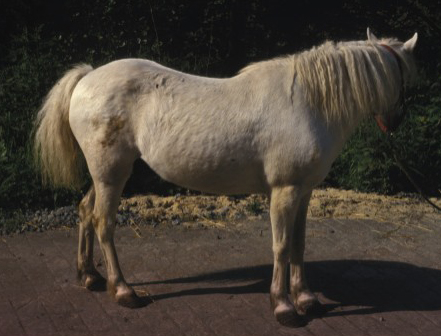Equine Veterinary Journal Early View May 2015
By Heather Ferguson
Plasma concentrations, analgesic and physiological assessments in horses with chronic laminitis treated with two doses of oral tramadol
A. Guedes, H. Knych and D. Hood
The aim of this nonrandomised trial was to investigate whether two different doses of tramadol were useful for analgesia in chronic laminitis cases.
Four horses with bilateral forelimb laminitis of over 6 months duration were used. Weight withdrawal of a specific forelimb (off-loading) was measured using a force plate system. Baseline measurements for the off-loading of each forelimb were determined, along with physiological parameters including heart rate, respiratory rate, gastrointestinal sounds and non-invasive blood pressure. These measurements were repeated on days 1, 3, 5 and 7 during tramadol treatment.
Two dosing regimes of tramadol were tested; firstly 5 mg/kg was administered orally every 12 hours for 7 days, then after a 7 day washout period, a 10 mg/kg dose was administered in the same way. Venous blood samples were on days 1, 3, 5 and 7 at set times following tramadol administration (1, 3, 6 and 9 hours following the morning dose). Plasma was tested for tramadol and its metabolites using a liquid chromatography mass spectrometry method.
Physiological variables did not change significantly over the study period and between the two tramadol dosing regimens. This is likely to be related to the selection of stable chronic cases for the study and their strict management. Off-loading frequencies of the forelimbs per minute were decreased compared to baseline values during both treatment regimes, although these differences were only statistically significant at the 10 mg/kg dose when off-loading was reduced by 40% but this incomplete reduction indicates that tramadol used alone does not provide adequate analgesia in these cases.
The median plasma tramadol concentrations at the 10 mg/kg dose are similar to concentrations reported to provide effective post-operative analgesia in humans. The concentration of tramadol’s metabolites were on average over the 7 day period below the concentrations at which analgesic effects are observed in humans, although their analgesic effects in horses are not yet well established. Notably, doubling the administered dose also proportionally increased the plasma concentration of tramadol and its metabolites, reducing the likelihood that poor bioavailability is an issue in equine clinical cases.
Bottom line:
Tramadol at a dose rate of 10mg/kg orally twice daily provides demonstrable analgesia in stable chronic laminitis cases, but at insufficient levels to be used as a sole agent. Tramadol is best employed as part of a multi-modal analgesic regime.
--Ends--


